The National Gallery was less crowded than when I visited a few weeks ago. We do not charge entrance fees for access to museums in the UK, which is all well and good, but it does mean that they can get get rather well attended, on occasions. Teachers are very fond of bringing their classes to museums, and for tourists, it is a great benefit. In comparison, the Louvre in Paris charges 17 euros for adult admission.
The Sainsbury Wing of the gallery is being ‘reconfigured’, so many of the paintings have been moved around and sited in new locations, including the basement (see below).
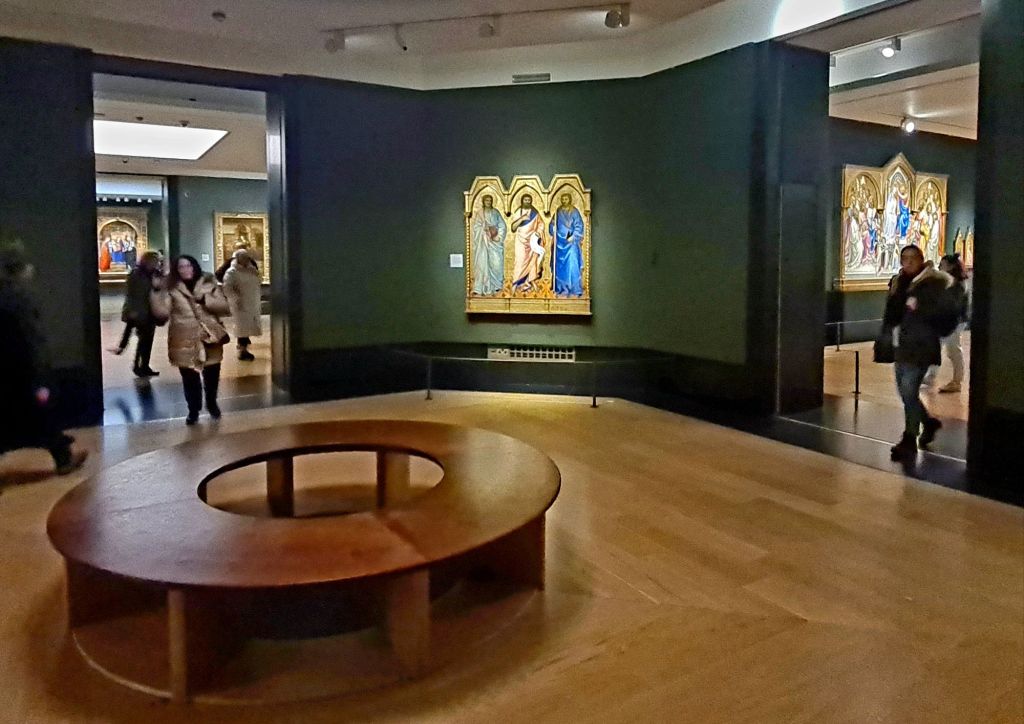
Early Renaissance paintings in the National Gallery, London
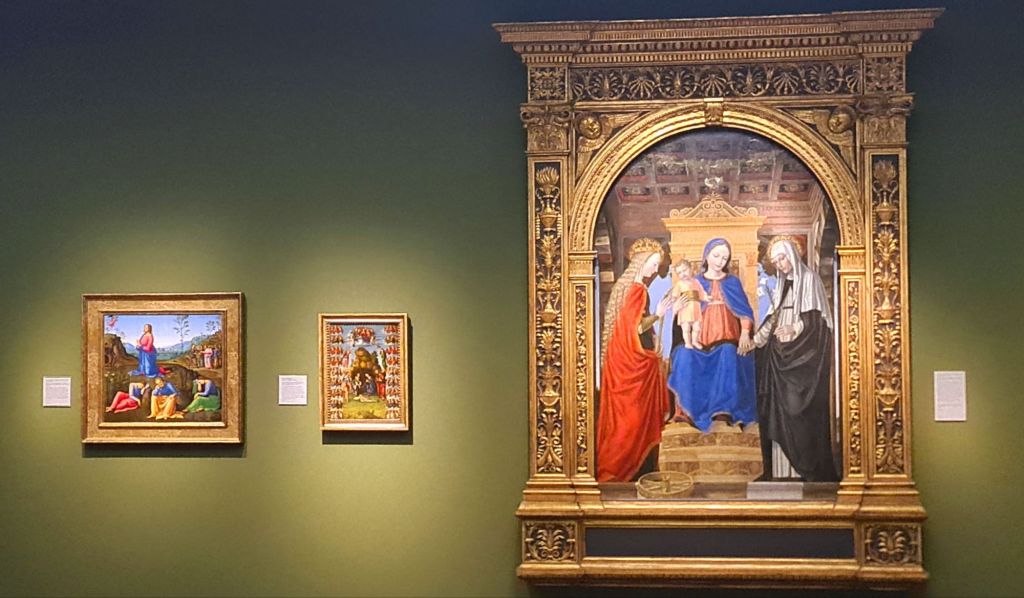
Early Renaissance paintings in the National Gallery, London
However, on this occasion, my eye was caught by some paintings I had never seen, or stopped to look at before. There were three impressive canvases by the French artist, Claude-Joseph Vernet (below). Now these atmospheric, 18th century land- and seascapes are not my favourite sort of art, but they are fascinating and a real insight into the people and customs (including costumes!) of the times.

Joseph Vernet (1778) by Élisabeth Louise Vigée Le Brun, Public domain, via Wikimedia Commons
One of the fun things about going to an art gallery is taking pictures! It is not that long ago, or so it seems to me, that you were not allowed to take photographs of the paintings. The thinking at the time, was that flash light might damage the paintings. Britain was one of the last countries to give in and change the policy regarding photography. Although many people just want to take a selfie in front of a famous painting to say ‘look where I was’ (!), it does, I think, really add to the occasion by allowing you to capture an image and look at it more closely, and for more time, at home.

National Gallery, London

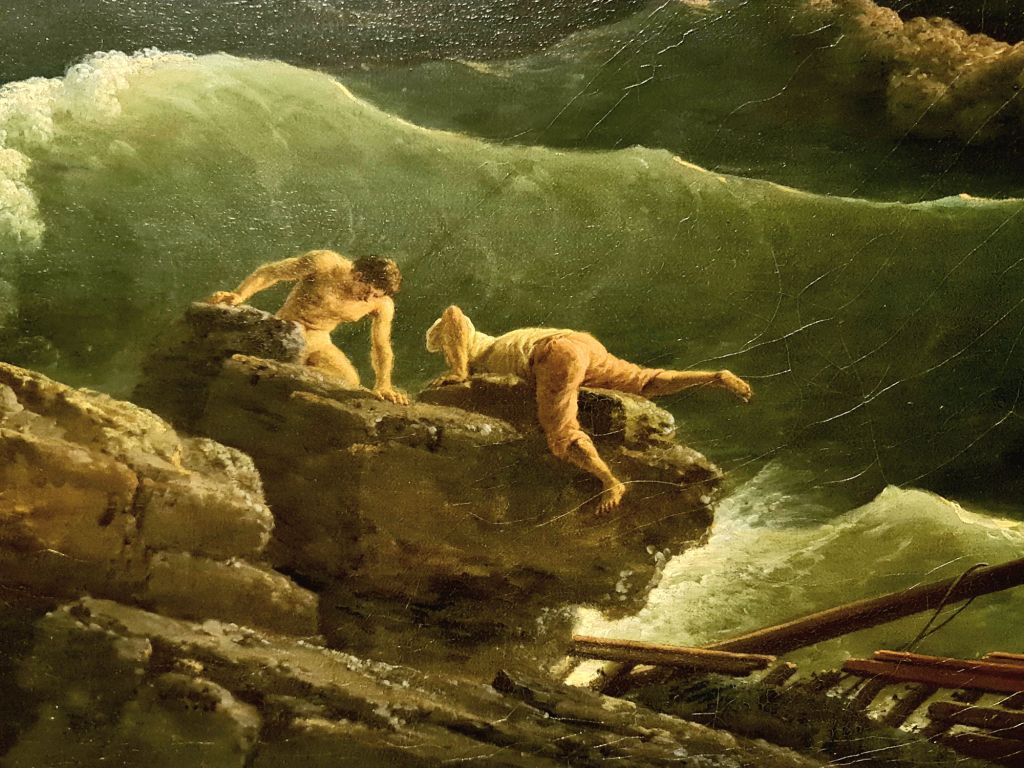
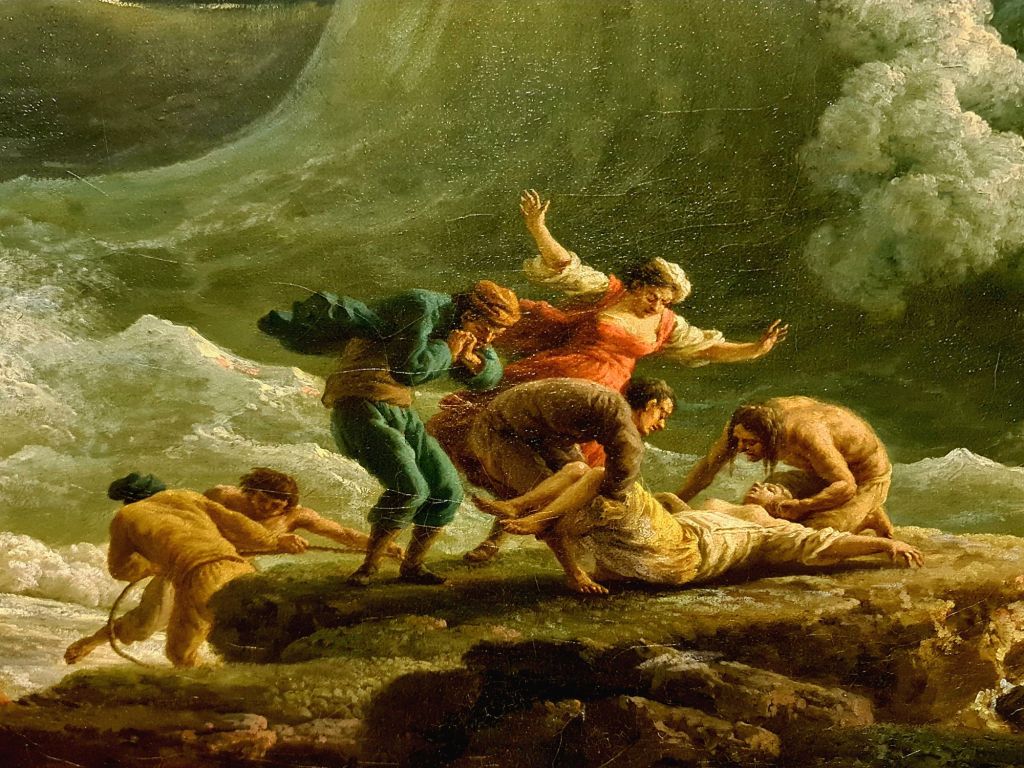


National Gallery, London
Photography also allows you to ‘sample a picture’. I really like doing this, because no matter how long you stand in front of a painting, there are details you might miss. Photographing sections, or sampling a picture, allows you to study it in much more detail. Large canvases, like those of Claude-Joseph Vernet, are full of fascinating details. It is really a portal, more than a glimpse, back into the 18th century.

National Gallery, London
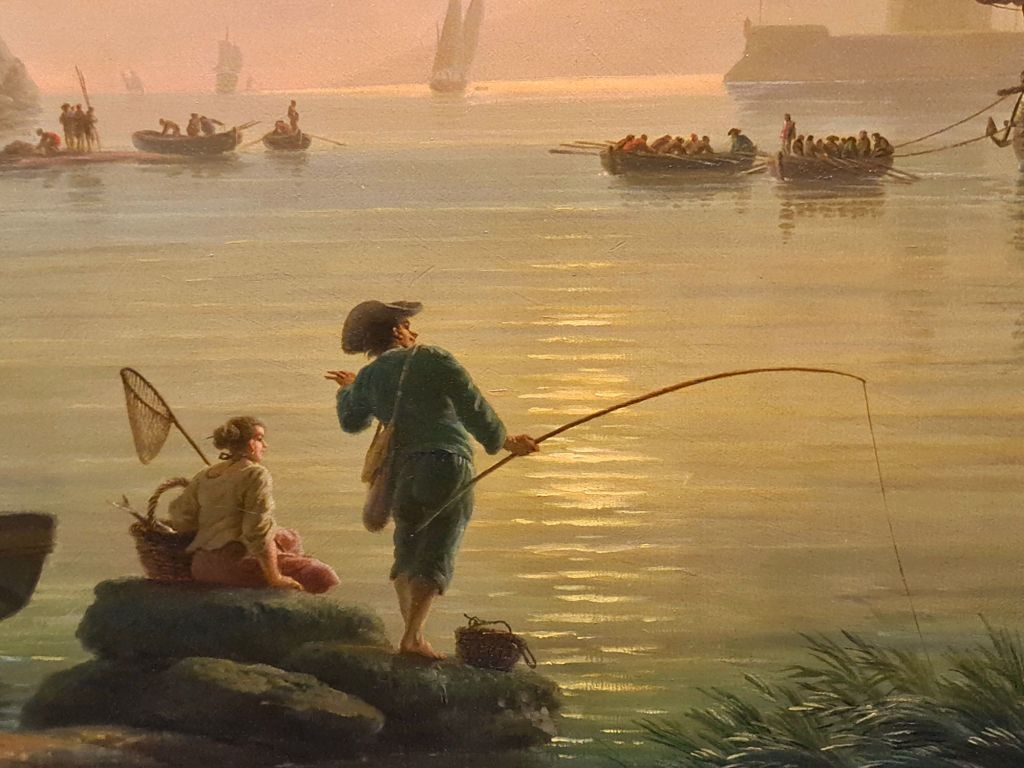

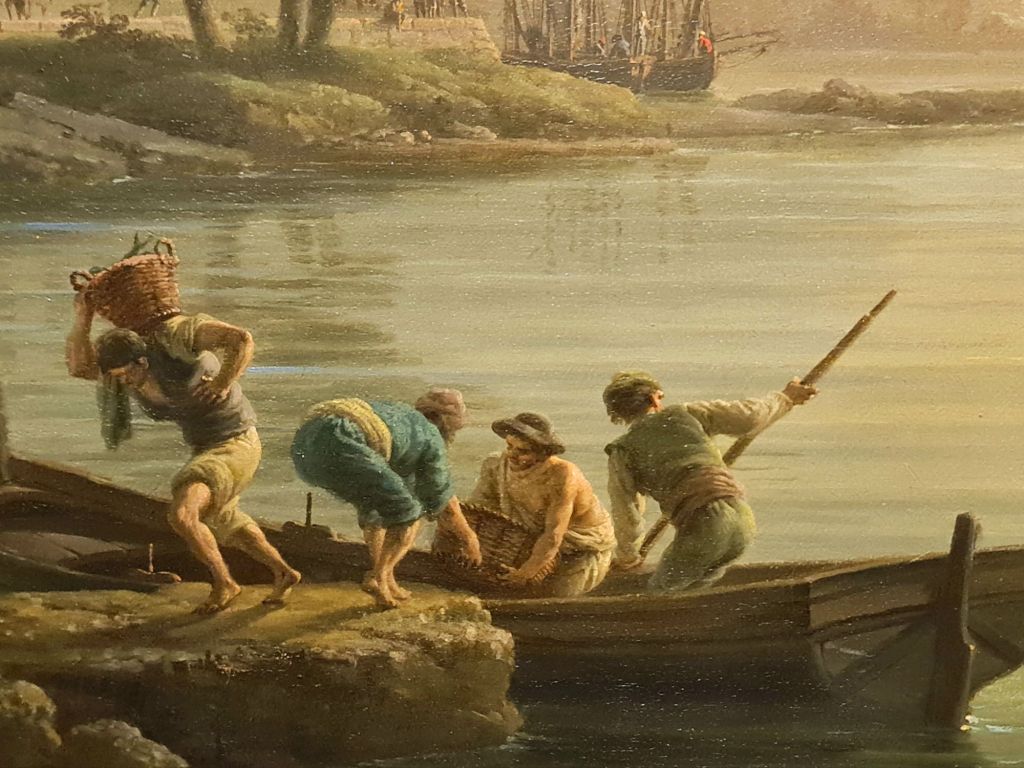

National Gallery, London
It is also possible to zoom in on each of these paintings on the National Gallery’s site on Claude-Joseph Vernet.
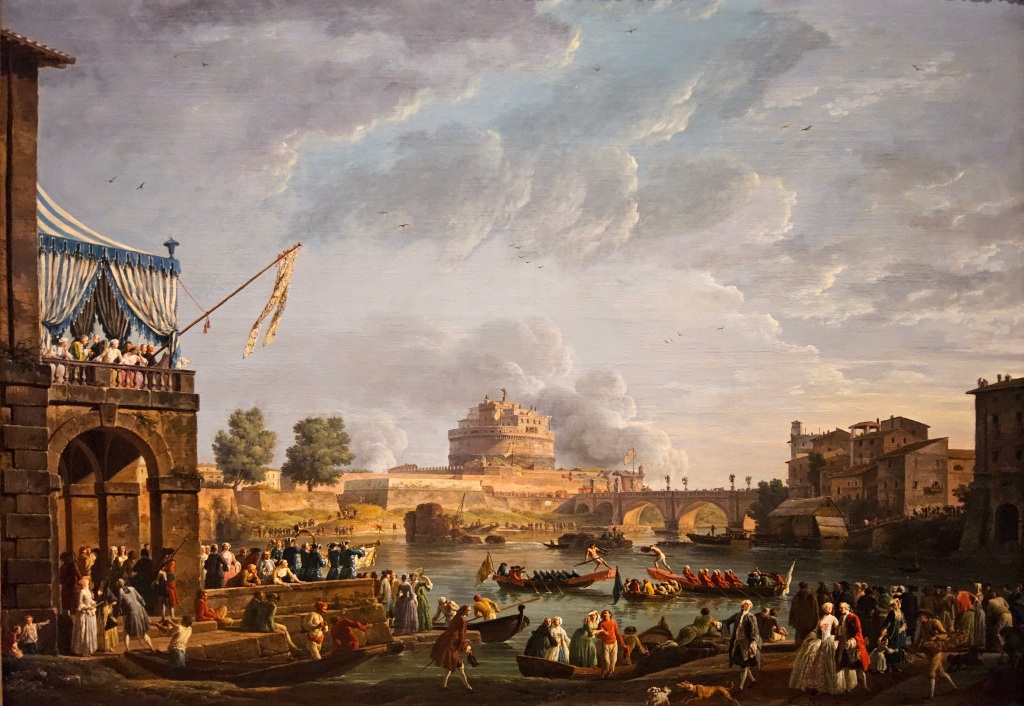






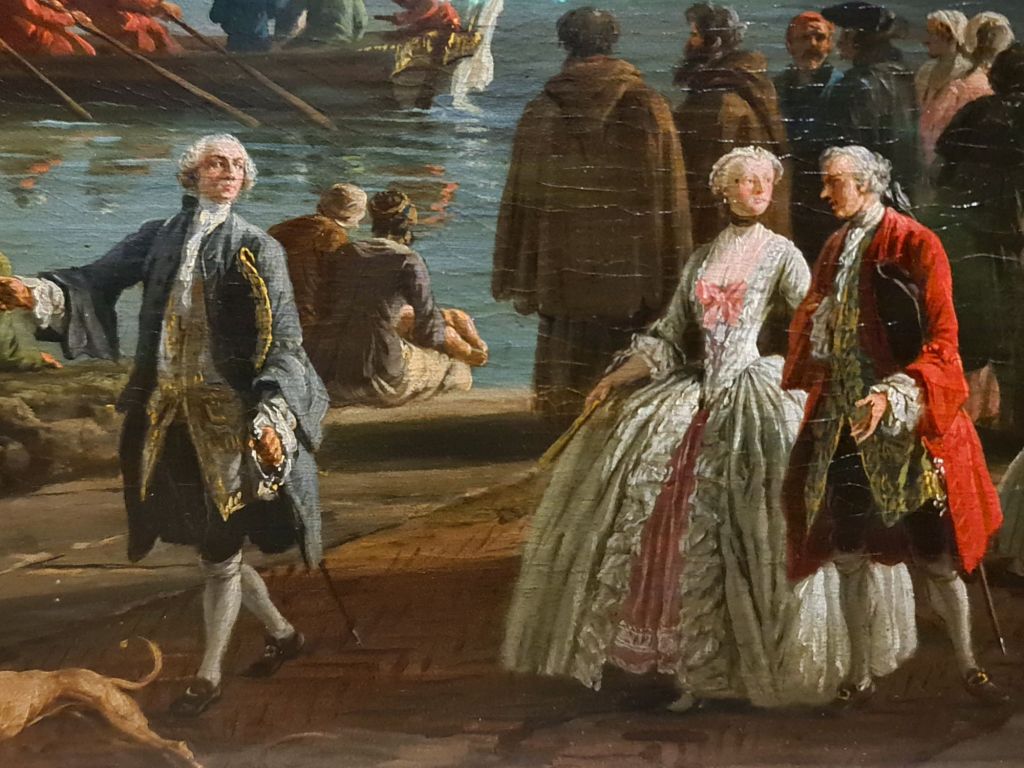
Another couple of paintings I had fun sampling are shown below. The painting by Jean-Honoré Fragonard called Psyche Showing Her Sisters Her Gifts from Cupid is an early work by this artist, painted when he was only 21. Follow the link for more details.

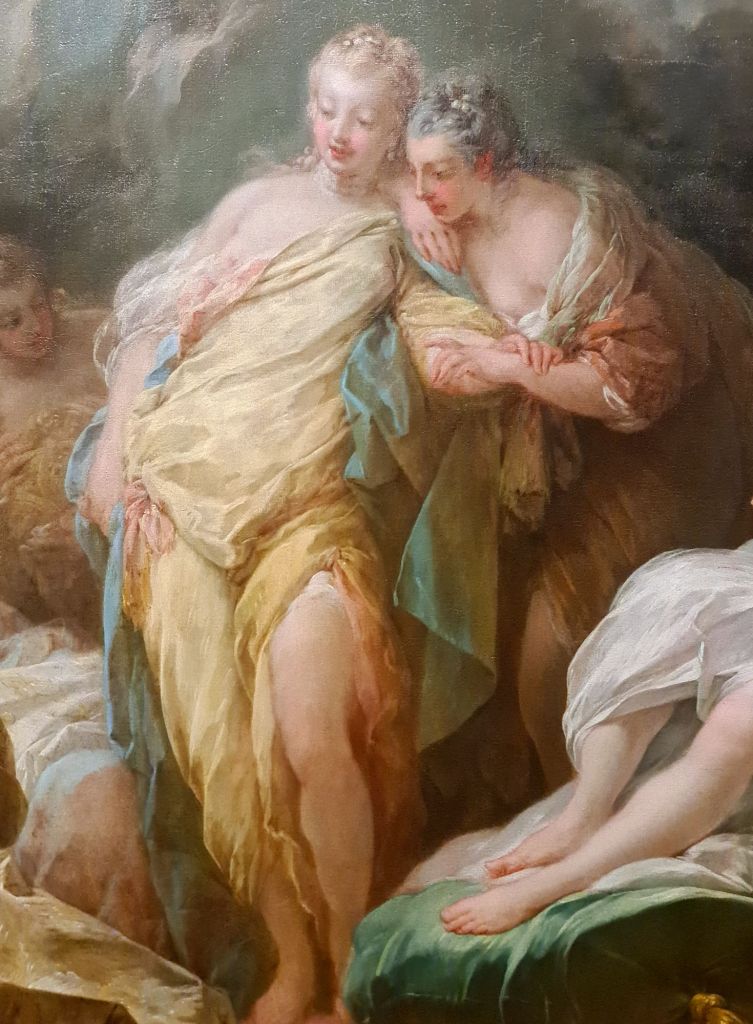
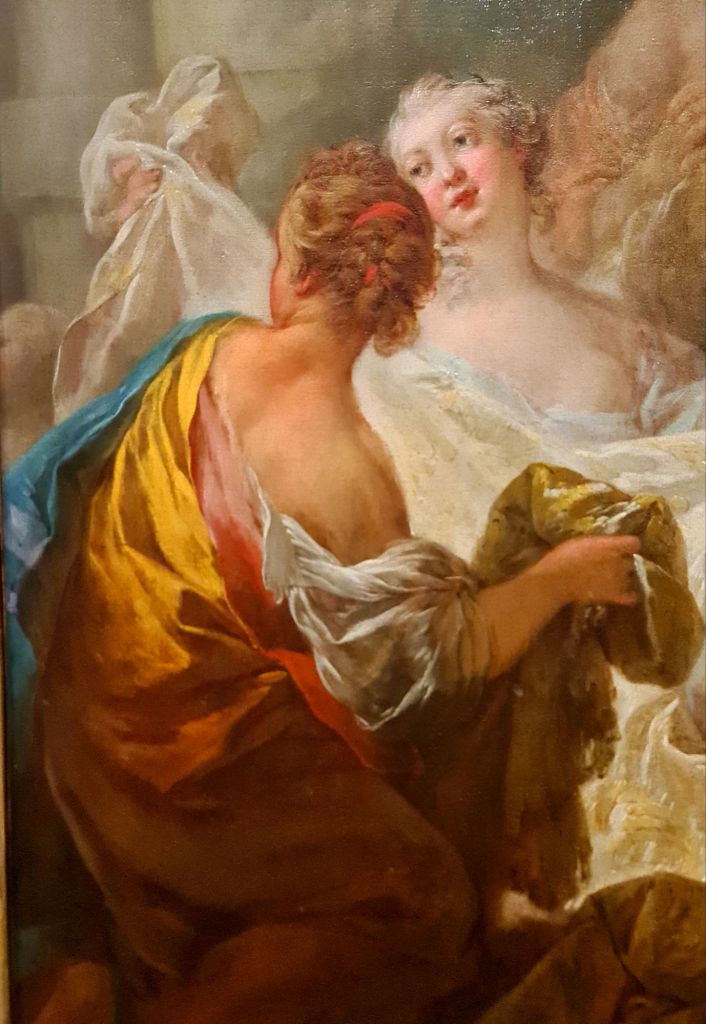
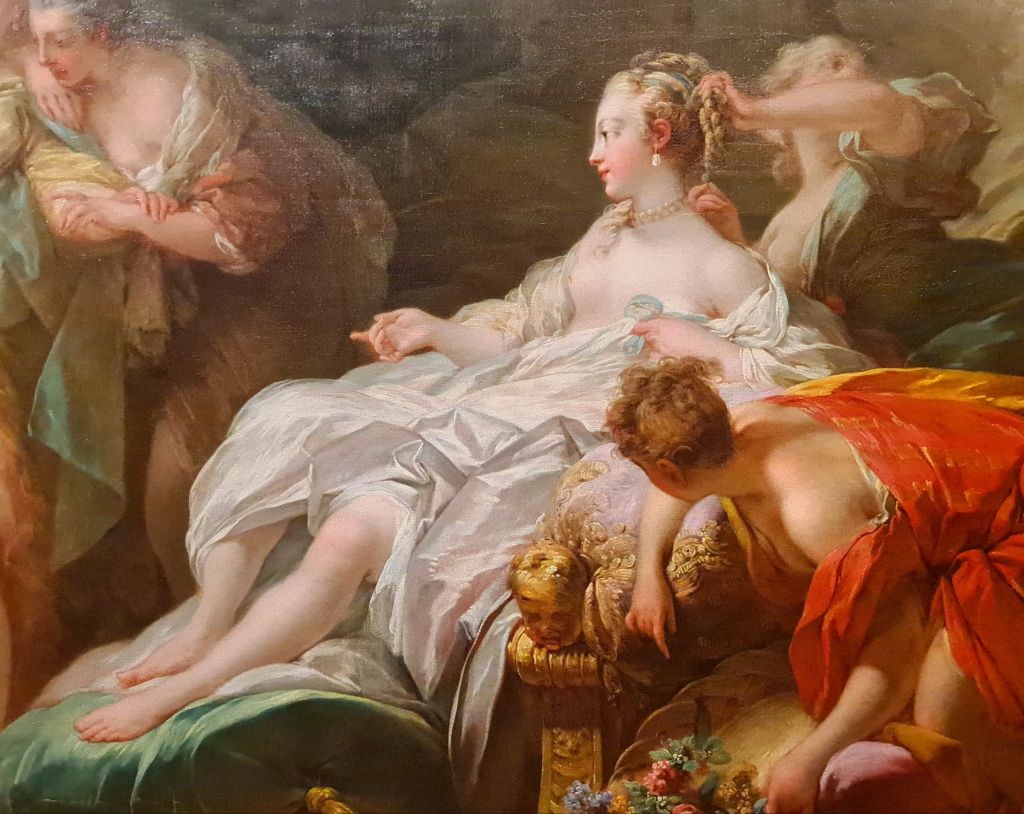
Details from Psyche showing her Sisters her Gifts from Cupid (1753) by Jean-Honore Fragonard National Gallery, London
Nicolas Poussin, another French painter, was born nearly 140 years before Fragonard, and his painting, A Bacchanalian Revel Before a Term, is in the classical style, I suppose. What struck me most about this wild party scene was what fun the dancers and revelers seem to be having! Apart from the poor baby which seems to be getting trampled underfoot, bottom left!



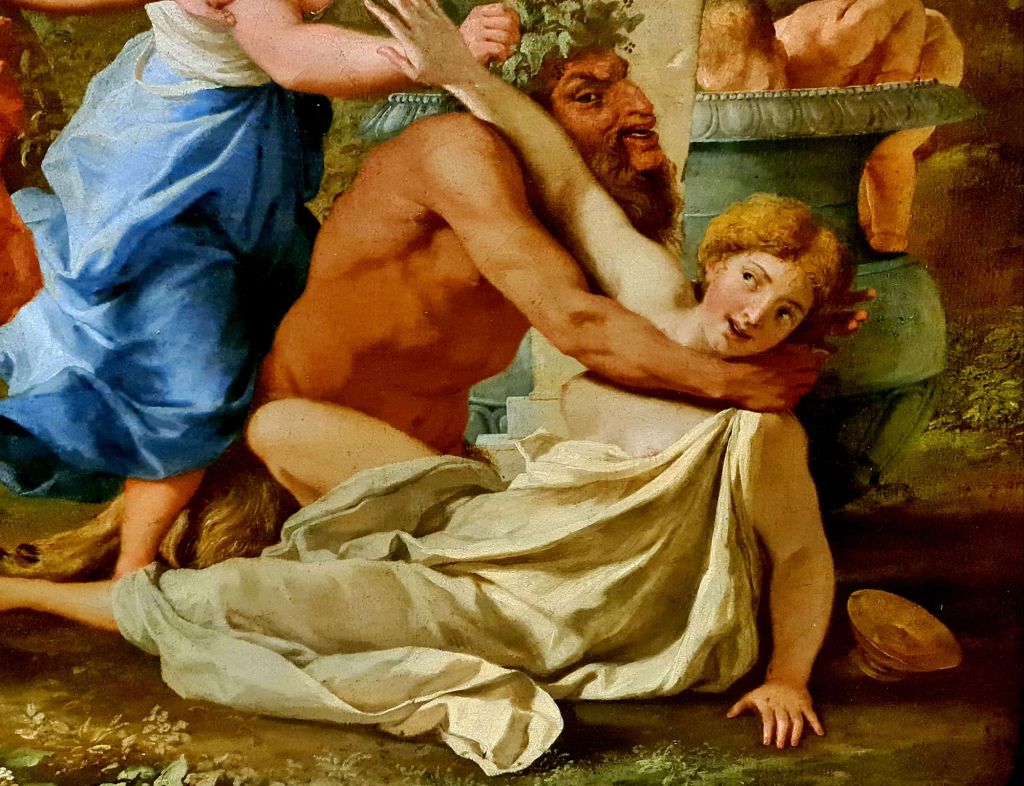
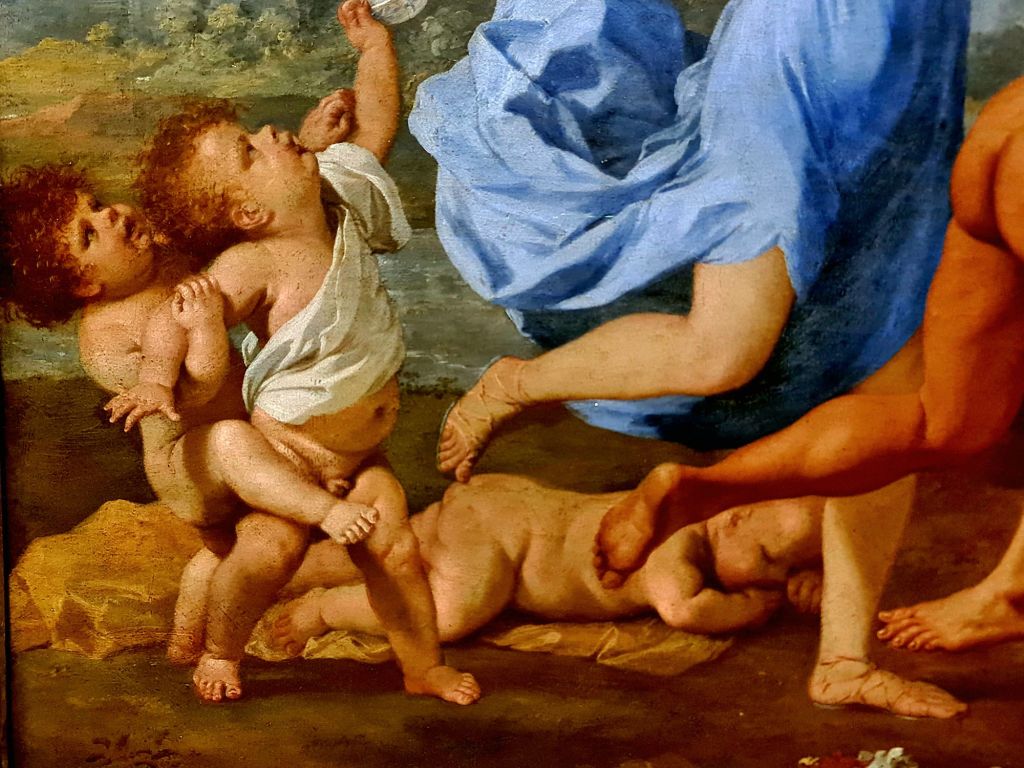
National Gallery, London
A number of artists have been inspired by this painting by Poussin, including the London-based artist Leon Kossoff, see here.

